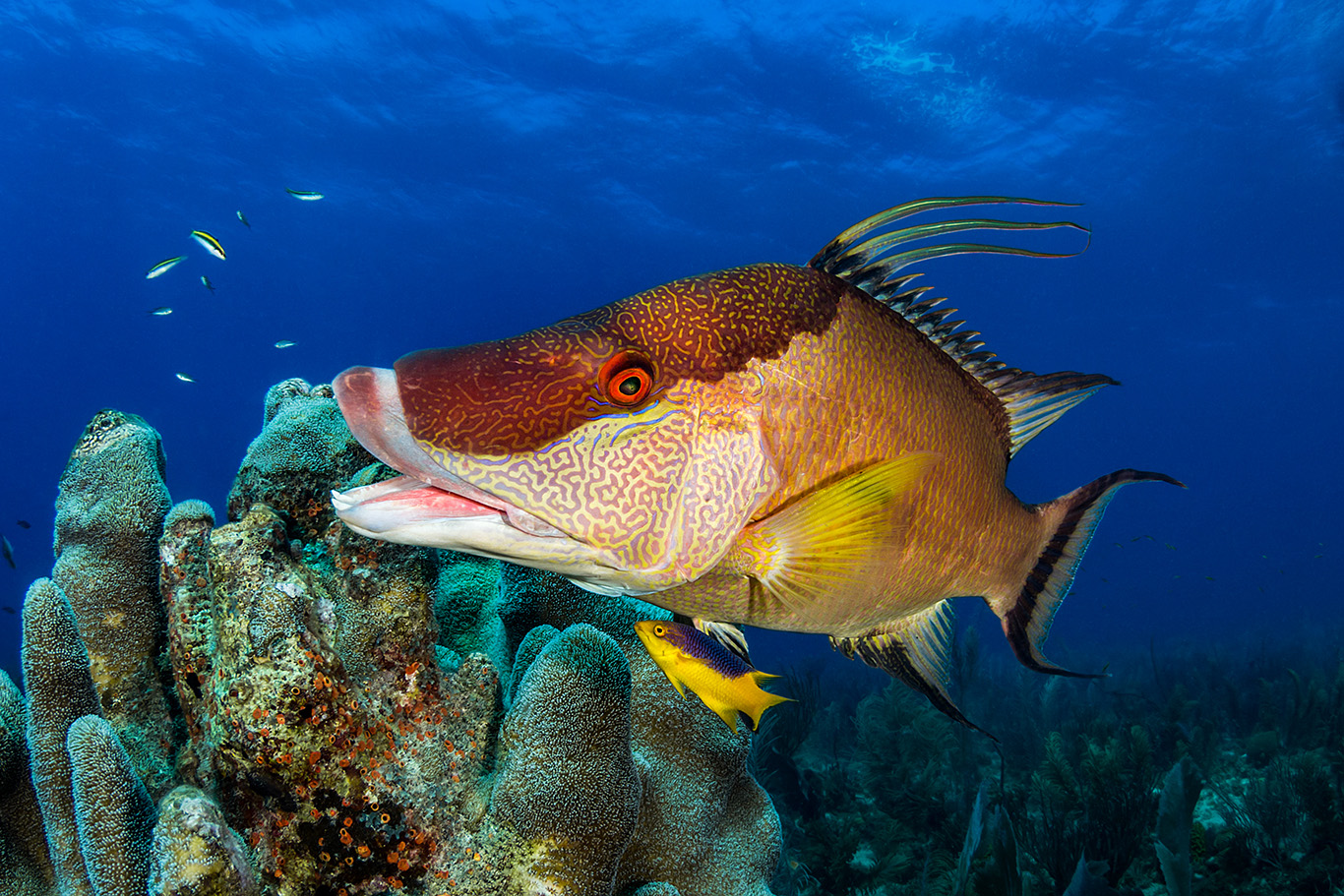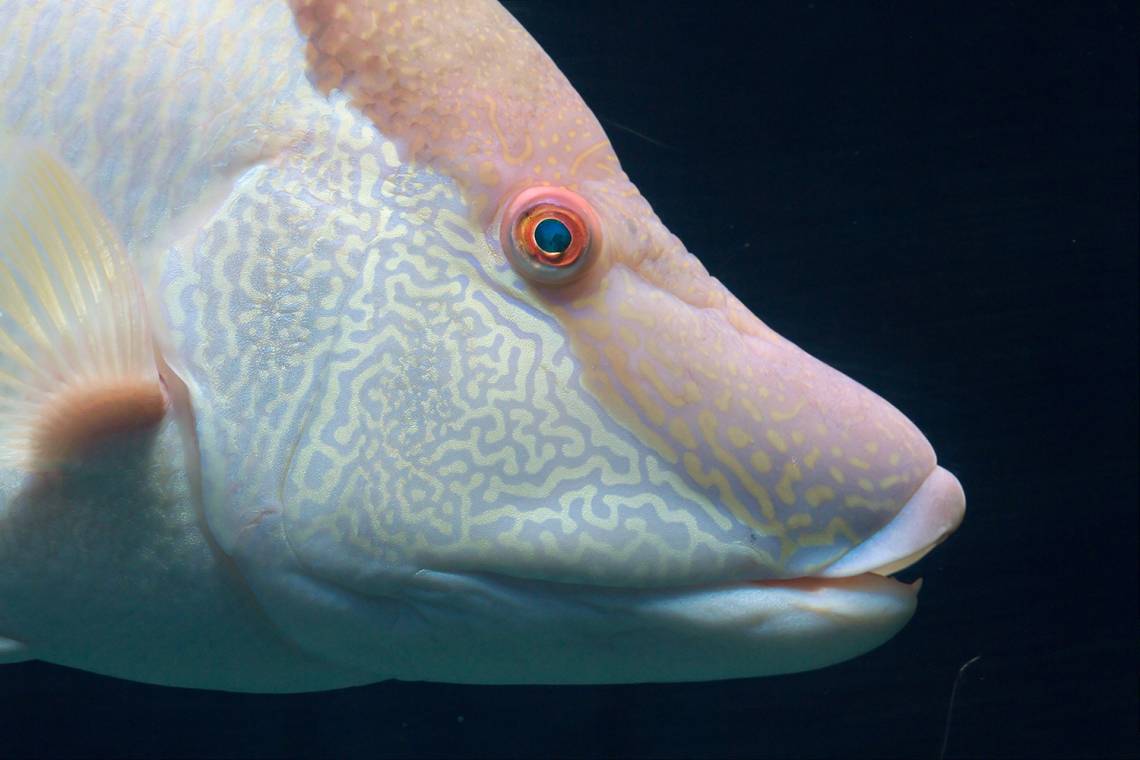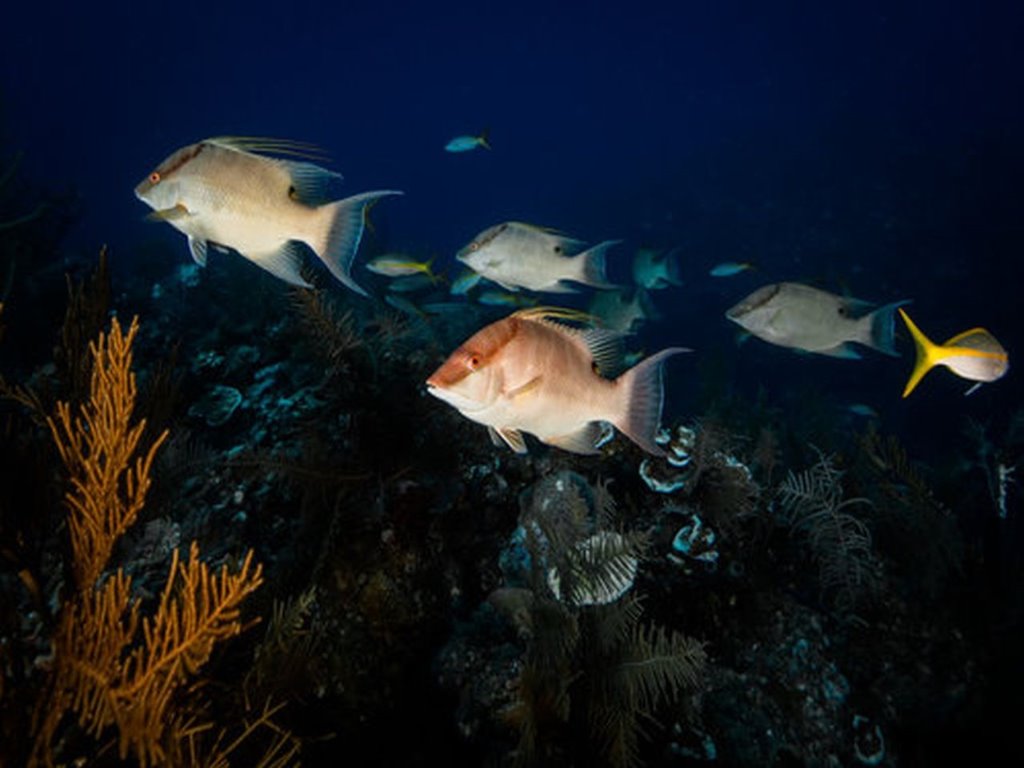5 Fabulous Facts About Hogfish
These curious facts will leave you hog-wild for hogfish

You’ve heard of catfish. You’ve heard of lionfish. And you’ve probably heard of frogfish, too.
But have you ever heard of hogfish? I certainly hadn’t, but as someone with the last name Hogge (yes, it’s pronounced like the animal), I knew once I learned about this adorably odd critter that I simply had to write about it. Fasten your seatbelts, friends, because I’m about to take you on a fact safari into the wild and wonderful world of Lachnolaimus maximus: the hogfish.
They’re named for their snouts.
Much like their nickname counterparts on land, hogfish have elongated snouts that earned them their namesake. This lengthy nose has a specific purpose: they’re specifically designed to help them forage for food. Hogfish absolutely love to snack on mollusks and crustaceans, and one of the best places to find them is buried in the sand at the seafloor. In a behavior known as rooting, they use their snouts to burrow into the sand and rummage around for these crunchy critters to munch on.
They can be pretty big fish.
These oval-shaped fish can vary in size, but are typically quite hefty, with larger individuals weighing up to around 22 pounds. To put that into perspective, that’s about the size of a dachshund, although there are some reports of hogfish that have been even bigger than that.
These fish have incredibly vibrant eyes.

As you can see, hogfish are show-stoppers in the looks department, boasting quite vivacious coloration. Their appearance, however, is often variable depending on their age, sex and primary location. While they typically range in color from a reddish brown to a pale grey or yellow, there’s one trait about them that’s undoubtedly jaw-dropping: their eyes. With fiery-red irises, the eyes of these fish are truly a spectacle to observe.
Mostly all hogfish are females at birth.
Yes, you read that correctly! Here’s the deal: hogfish are what’s known as protogynous hermaphrodites, meaning that they have the ability to switch from female to male once they grow to be large enough. They’re also known to hang out in little polygamous groups, with a single male spending time with (and pursuing, if you will) multiple females.
They need our help.
